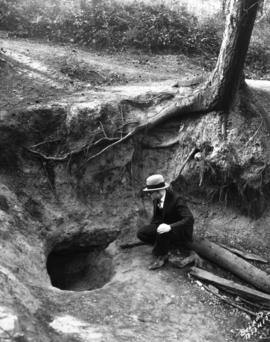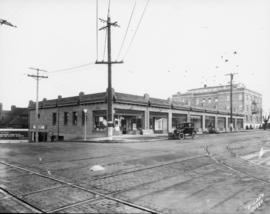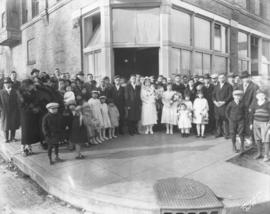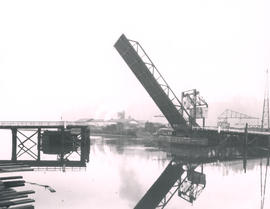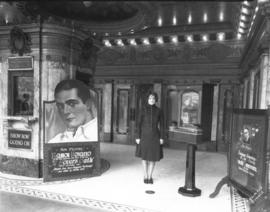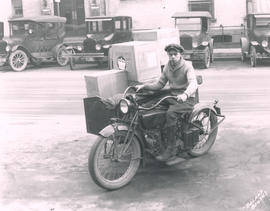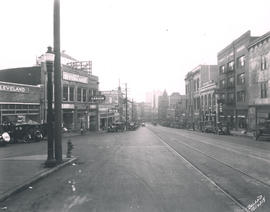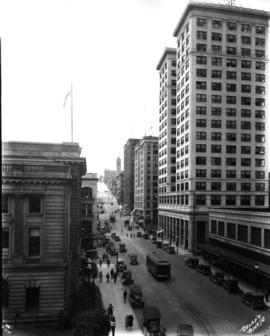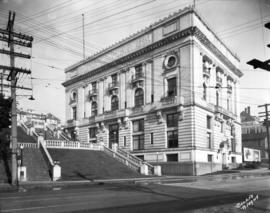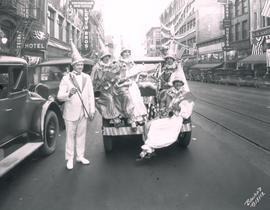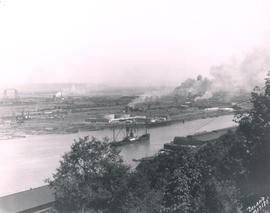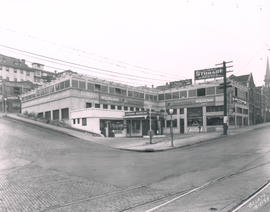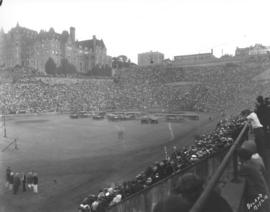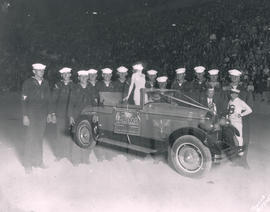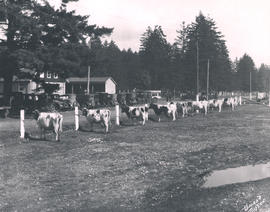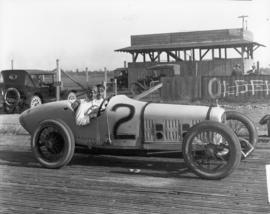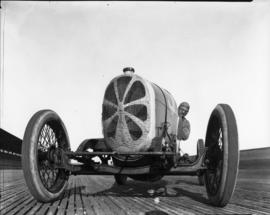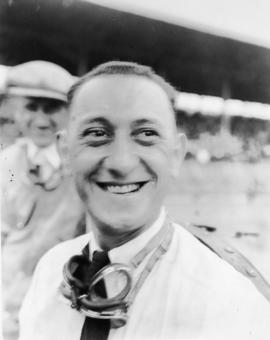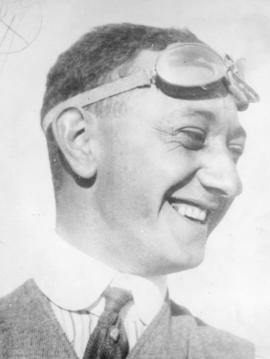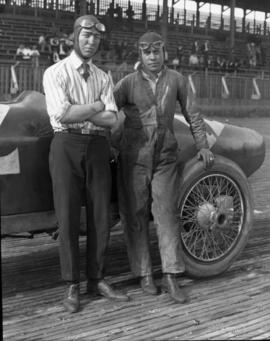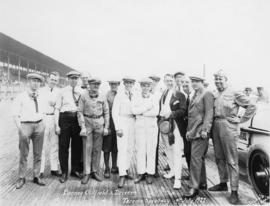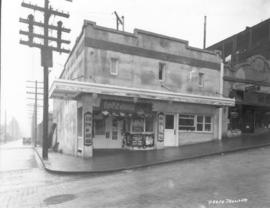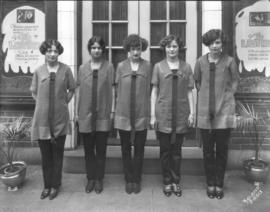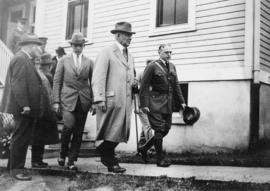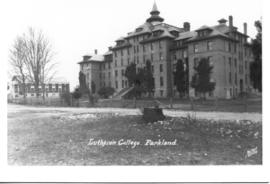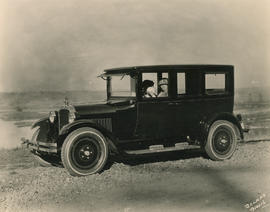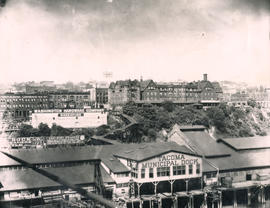- Item
- 1925-09-23
Part of Marvin Boland Photographs
Columnist Roy Beckman published this picture under the headline "Fircrest Mystery Tunnel Lures Adventure Seekers" in the October 8, 1925, News Tribune. The story told of a tunnel mouth, located yards from University Ave., leading into a four foot wide, 2-3 foot high tunnel. Since it was located near where the expelled Chinese had settled in Fircrest, it was immediately assumed that the tunnel was their creation. Only one person could be found who had traversed it as a youth. He reported it as being 2 1/2 miles long and ending on a bluff above Salmon Beach. It had two large chambers, 20 x15 feet, shored up by timber and evidencing occupancy. It also had two branch tunnels leading off that were not explored. It was rumored that the tunnel had been used to smuggle opium or human contraband, but by the time of the newspaper article, a portion of the tunnel had been utilized by the community of Regents Park as a sewer and was uninhabitable due to sewer gas. (TNT 10/8/1925, pg. 6) TPL-999; G72.1-116
Tunnels--Fircrest; Smuggling--Fircrest;
